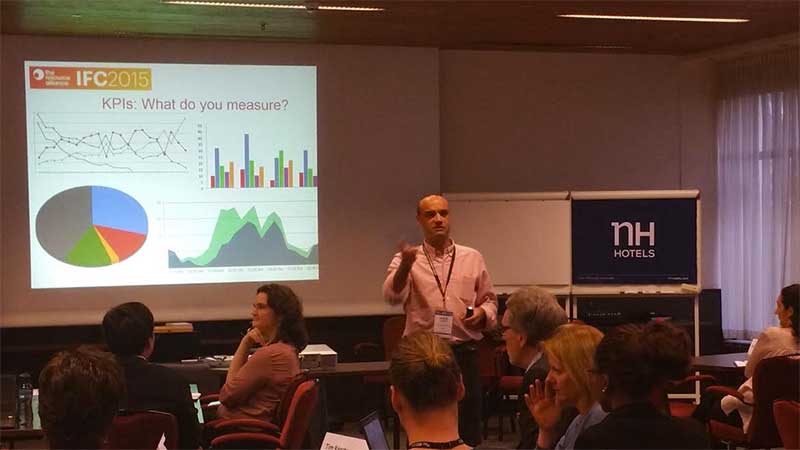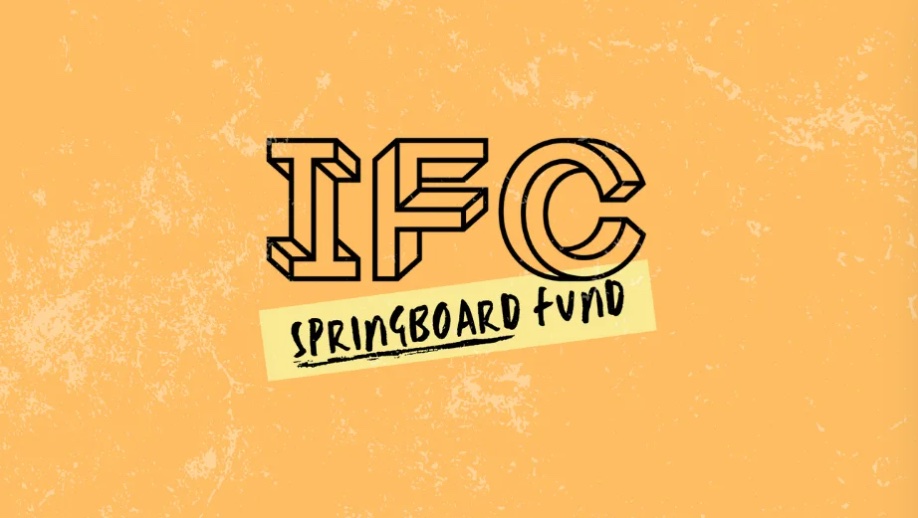Face-to-face fundraising is “recession-proof technique”, IFC delegates told
Recruiting regular donors through face-to-face fundraising can help charities maintain and even increase income during times of economic difficulty, delegates at the International Fundraising Congress heard today.
Daryl Upsall and David Cravinho presented the first of a two-day masterclass on face-to-face fundraising at this week’s IFC in Holland, run by the Resource Alliance.
David Cravinho, head of regular giving at Unicef Switzerland, said:
“Face-to-face fundraising is recession free – data from across Europe and South America shows this to be true. This is because it is about one human connecting with another, and in times of economic difficulty people recognise that others suffer and so want to help them.”

David Cravinho of Unicef Switzerland at the face-to-face masterclass at IFC 2015.
Daryl Upsall, of Daryl Upsall Consulting International, added:
Advertisement
“Contrary to popular opinion, a recession is absolutely the time to approach your board for more investment. The biggest non-profits in Spain have grown enormously since the recession, recruiting many thousands of new supporters through face-to-face.”
Members of the audience shared similar experiences. A delegate from Australia said they had found the recession helpful for recruiting fundraisers as well as donors. When the national job market is difficult, it means there is a higher calibre of people willing and able to work as fundraisers, they said – adding that “the more intelligent a conversation fundraisers have with donors means the stronger the relationship the charity can have with that individual”.
Packed #f2f #fundraising masterclass at #IFC2015 – and no wonder, it's fab! So useful. Thanks @darylupsall & team pic.twitter.com/kXvE7ICsph
— Agenda (@Agenda_Comms) October 20, 2015
Retention challenges
Upsall, who has more than 30 years experience managing fundraising, communications and advocacy operations in more than 60 countries, accepted that retention of donors recruited via face-to-face channels can be challenging. He said:
“Some organisations have very high attrition rates. However, attrition is going down for those organisations that apply the best retention practices”.
He and Cravinho, who oversees all of Unicef’s regular giving in over 40 countries, were joined at this point by guest speaker Rupert Tappin of Decaid Consulting. He presented his top ten tips for effective retention of donors recruited via face-to-face fundraising:
1. Effective fundraising management: clean data, well-managed teams, realistic expectations, the courage to innovate and a willingness to question everything are essential.
2. Don’t neglect payment reconciliation. The back-end donor processing facilities are really important. Lots of donors can be lost due to payments not being properly collected by the charity. Equally, the quicker the first payment is collected, the lower the attrition rate.
3. Choose a great agency. Work closely with them as a genuine partnership and hold each other accountable for what has been promised.
4. Think about your recruitment channel and payment method: understand the metrics and most effective comparisons to make. Not all campaigns are the same and will provide different results.
5. Plan the donor journey: what you will send to whom and when – including those who cancel their gift. Listen to your donors – give them the opportunity to upgrade or downgrade their donation, or give them a donation holiday.
6. Communicate with the donor in the way that suits them best – not what suits you best (i.e. the cheapest option). Keep their needs at the forefront of your mind.
7. Consider short-term gain v long-term pain: the best long-term donor isn’t necessarily the cheapest. Consider cost per recruit with return on investment.
8. Match reality with what is planned: break the obsession with a one year cycle – the success of regular giving should be determined by performance over five years and longer.
9. Tell the story: Build up the donor’s knowledge of the cause and continue the story that they were recruited on to help retain the donor and strengthen their loyalty to your cause.
10: Break down internal silos, particularly between the finance and database teams. Internal knowledge and understanding of F2F is critical for effective continuity of donor relationship.
The International Fundraising Congress runs from 20 to 23 October 2015.





